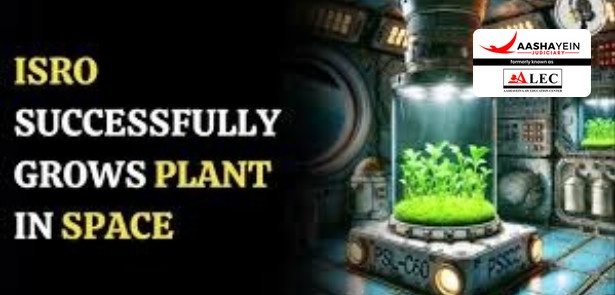Space exploration is no longer limited to traveling to celestial bodies or studying distant stars; it now encompasses solving critical challenges for human survival in space. One such breakthrough comes from the Indian Space Research Organisation (ISRO), which has successfully germinated black-eyed pea seeds in space as part of its Compact Research Module for Orbital Plant Studies (CROPS) initiative. This monumental achievement paves the way for sustainable food sources, addressing the nutritional and psychological needs of astronauts during long-duration space missions.
CROPS Initiative: A Vision for Space Farming
The CROPS initiative is ISRO’s flagship project to study plant growth in space. It aims to replicate Earth-like conditions, excluding gravity, to explore the feasibility of cultivating plants in extraterrestrial environments.
CROPS-1 Mission: The first mission under this initiative successfully demonstrated the germination of black-eyed pea seeds and initial plant growth aboard a spacecraft.
Setup: CROPS-1 includes a mini-greenhouse equipped with soil-like porous clay pellets, controlled temperature and light cycles, and an electric valve system for precise moisture regulation.
This controlled environment is a significant step toward developing methods for growing plants in microgravity, a challenge faced by space agriculture for decades.
You can also read the latest judgment by visiting [Latest Judgment].
For more information, visit [Aashayein Enquiry Section]
Challenges of Space Agriculture
Growing plants in space is no simple task. The unique environment presents several hurdles:
1. Roots cannot grow downward, and water distribution is complex.
2. High levels of cosmic radiation pose a threat to plant cells.
3. Temperature Fluctuations: Extreme variations in temperature require careful regulation.
4. Adequate light is crucial for photosynthesis, especially in shadowed areas or spacecraft interiors.
These challenges demand innovative solutions to ensure successful cultivation.
Why Black-Eyed Peas?
Black-eyed peas were chosen for their resilience and nutritional value. Ideal plants for space farming include:
- Fast-growing crops like lettuce and spinach are nutrient-rich.
- High in protein, beans are essential for long-term missions.
- Crops like wheat, rice, and carrots are suitable for extended cultivation.
Future Prospects of Space Agriculture
The success of CROPS-1 is only the beginning. The next phases of the initiative will focus on:
- Extending growth periods to develop plants beyond the two-leaf stage.
- Implementing active control systems to manage environmental factors, such as humidity, light, and temperature.
- Exploring the possibility of producing seeds from space-grown plants for continuous cultivation.
- These advancements are crucial for achieving self-sustaining ecosystems for future missions to the Moon, Mars, and beyond.
A Step Toward Sustainable Space Exploration
ISRO’s success in germinating black-eyed pea seeds in space is a testament to India’s commitment to advancing space technology. By addressing fundamental challenges in space agriculture, the CROPS initiative brings humanity closer to creating a sustainable future for long-duration space missions.
As space agencies worldwide continue to collaborate on these initiatives, the dream of living and thriving on other celestial bodies is becoming a tangible reality.

